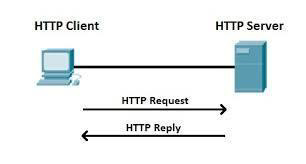
 Data Structure
Data Structure Networking
Networking RDBMS
RDBMS Operating System
Operating System Java
Java MS Excel
MS Excel iOS
iOS HTML
HTML CSS
CSS Android
Android Python
Python C Programming
C Programming C++
C++ C#
C# MongoDB
MongoDB MySQL
MySQL Javascript
Javascript PHP
PHP
- Selected Reading
- UPSC IAS Exams Notes
- Developer's Best Practices
- Questions and Answers
- Effective Resume Writing
- HR Interview Questions
- Computer Glossary
- Who is Who
What are the differences between AMQP and HTTP?
Let us begin by understanding the concepts of advanced message queuing protocol (AMQP) and HyperText Transfer Protocol (HTTP)
AMQP
Advanced message queuing protocol (AMQP) is a message protocol that deals with publishers and consumers. The publishers produce the message whereas the consumer picks the message and processes it.
Given below is the pictorial representation of AMQP −

This protocol is used in client-server messaging and in IOT device management. It allows the messages to be passed between applications.
AMQP is a new standard design to meet financial institutions and it enables the interoperation, sharing which allows business to work together in a wide infrastructure.
AMQP secure compact, reliable binary transfer protocol to move messages between applications. It supports classic message brokers.
Layers of AMQP
AMQP is usually divided into two layers −
Function layer − Basic file transfer transactions, exchanges message queues access and control streaming.
Transport layer − Framing content data representation, error handling.
The functional layer defines a set of commands that do useful work on behalf of the application.
The transport layer carries these methods from application to server and back which handles channel multiplexing, framing, content encoding, data representation and error handling.
The design of AMQP is to enable the development and industry wide use of standardised messaging middleware technology which will lower the cost of enterprise and systems integration and provide industrial grade integration services to a broad audience.
HTTP
HTTP stands for Hyper Text Transfer Protocol and is an application protocol. Using hyperlinks embedded in hypertext the web developers are able to connect web pages.
HTTP is a base of data communication for WWW (World Wide Web). It was invented by Tim Berners-Lee at CERN in 1989. It acts as a request-response protocol in the client-server computing model.
For instance, let us consider a browser as a client and an application running on a computer hosting a website as a server.
The client first initiates a HTTP request message to the server. The server then collects requested resources such as HTML files or any other contents and responses back to the client.
If the requested resources are not found on the server it will send an error to the client.
Given below is the pictorial representation of HTTP −

Differences
The major differences between AMQP and HTTP are as follows −
| AMQP |
HTTP |
|---|---|
| The full form of AMQP is Advanced Message Queuing Protocol. | The full form of HTTP is Hypertext transfer protocol. |
| AMQP was developed by JP Morgan. | HTTP was developed by TIM Berners lee. |
| AMQP is an asynchronous data communication. | HTTP is a synchronous communication. |
| We can easily setup and manage the AMQP protocol | HTTP can be used in every aspect. |
| The Message delivery is guarantee in AMQP | In HTTP there is no guarantee for message delivery. |
| AMQP provides a subscribe interface. | HTTP provides a point-point interface. |
| AMQP can manage the server issues. | HTTP cannot react to server issues. |
| AMQP is a cost effective protocol. | HTTP is a multipurpose protocol. |
| It has processed the message into slots. | It can process the message as segments. |

